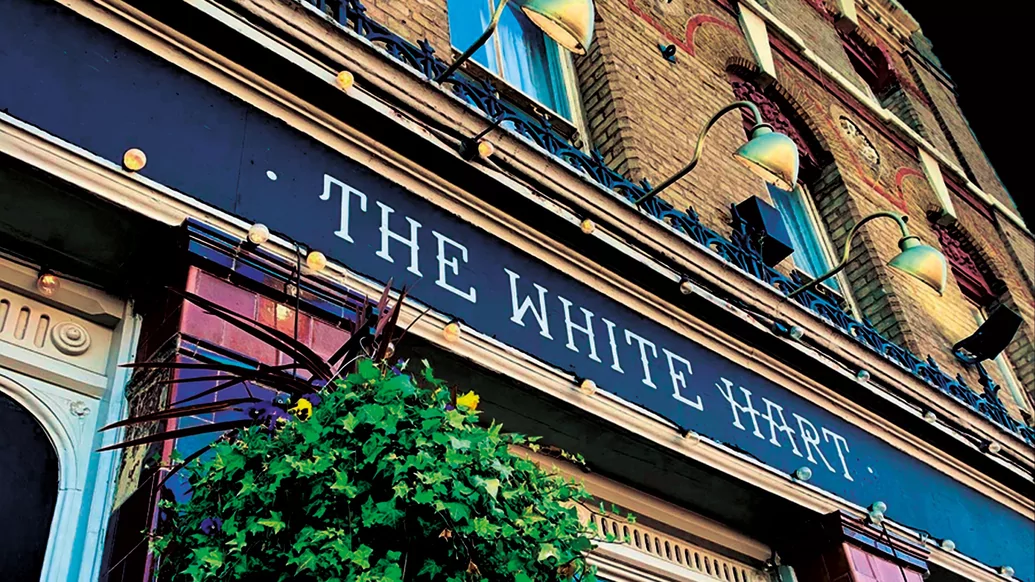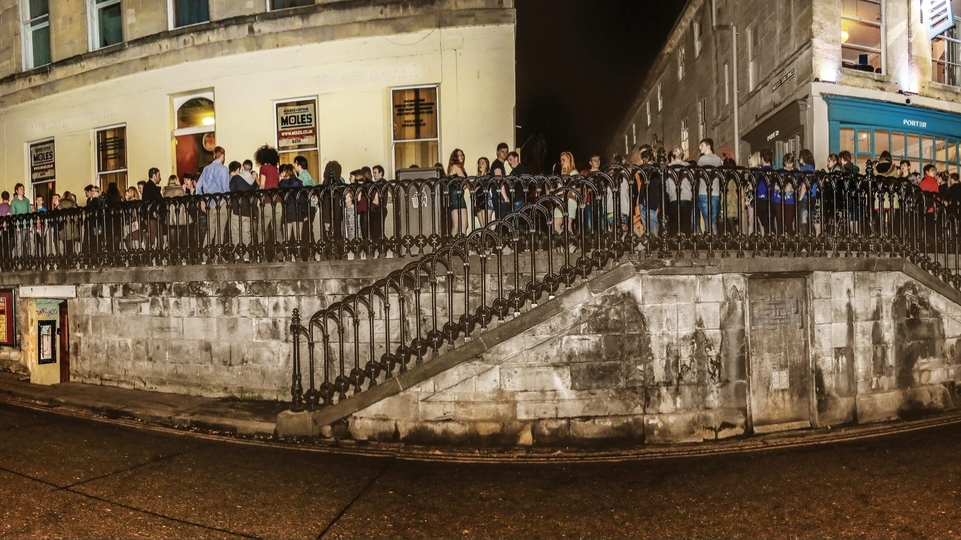
Planning for the Future: a government proposal threatening clubs across England
A new white paper published by the UK Government plans to completely reorganise England’s system for planning applications, leaving the country’s clubs under serious threat of encroachment from developers, with little room for objection from local communities or authorities. Ben Hunter looks at the recent examples of Motion Bristol and London’s White Hart to highlight the importance of case-by-case consultation, and the danger posed by the Planning for the Future paper to English venues
When it comes to the UK’s live music sector, the government’s public optimism has been less than forthcoming. After all, it’s difficult to spin an 80% decline in revenue as anything but catastrophic. The pandemic has also hardened perceptions that the government is not giving the sector the support it needs, despite it bringing in over £5 billion pre-pandemic. The mixed response to the £1.57 billion Culture Recovery Fund shows just how much goodwill has been lost between government and the creative industries.
While the human, cultural and financial costs of the pandemic dominate public life; vast swathes of government policy are being comparatively ignored. One policy that affects the future of UK music venues, but has received far less attention than it deserves, was put into action this summer – and if its current proposals are implemented, they’ll make the live music sector crisis even worse.
In August, the Ministry for Housing, Communities and Local Government released Planning for the Future, a dryly named but important white paper that proposes to completely reorganise England’s system of planning applications. The proposals are complex and varied, but the most fundamental change is to how planning applications are assessed.
Under the current system, applications are judged by a council on a case-by-case basis, in line with national guidance, local development plans and the specificities of any given case. Local consultations are conducted and the process is admirably transparent: anyone can search through their local applications, give feedback on them and make their voice heard. Under the new, proposed system, councils would write a ‘local plan’, outlining their development objectives and where they will happen. Councils are already obligated to write local plans, but right now they’re unique to each borough, with limited standardisation.
In the proposed local plans, councils would “zone” their area according to nationalised guidelines, marking out different sections as suitable for growth or regeneration. A local design code, which stipulates technical requirements for new buildings, would also be written, and any planning applications that meet this code and fall in an area marked for growth would have a presumed right for development.
Under this new regime, the only chance for local residents to voice their concerns would come when the local plan and design code are written. The white paper describes this as a chance to “streamline the opportunity for consultation at the planning application stage, as this adds delay and allows a small minority, some from the local area and some not, to shape outcomes.” In reality, venues would have to campaign against developments that could potentially be five or even seven years in the future, a virtually impossible task.


This should ring alarm bells. Not only are high priority development areas exactly where venues tend to be, community campaigns are one of the few levers that these spaces can pull to try and save themselves. If local people can’t object to planning applications in a transparent way, the process could become incredibly difficult for venues to navigate, and potentially open to corruption and favouritism.
The implications of these proposals were summarised by Laurie MacFarlane, a researcher at University College London and an expert on planning, as “the greatest transfer of power from public to private since Thatcher’s Right To Buy.”
Motion in Bristol and The White Hart in London are two venues that illustrate the risks this transfer could pose. They exist at opposite ends of the venue spectrum; the former a renowned large club, the latter a small pub which hosts live music and DJ sets for locals. Both have fought battles against developer encroachment: Motion has survived, whilst the White Hart will soon lose its ability to host any music whatsoever.
The main reason for these contrasting outcomes was a differing application of ‘agent of change’. This rule states that “existing businesses or facilities should not have unreasonable restrictions placed on them as a result of development” and, to prevent this, those responsible are “required to provide suitable mitigation before the development is completed”. This acts as a protection for venues because any new building has to make sure they have enough soundproofing; it’s their responsibility, not the venues, to ensure that live music can continue.
Agent of change isn’t a law, though. It’s one paragraph in a broader set of guidelines issued by the government. It’s open for interpretation, and its protective status relies on cooperation between venues, councils and developers. By removing case-by-case consultations, the new proposals would cut out the main forum for such cooperation.


Motion’s story shows how agent of change can work to the benefit of not only venues, but councils and developers as well. The club is in St Phillips, an old industrial area that falls within the Temple Mead Enterprise Zone, a section of Bristol city centre selected by Bristol City Council as a priority for new development.
The planning application that threatened the club is a large, multi-developer, mixed-use plot that will have a school, student accommodation, office space and other residential facilities. It’s exactly the type of investment St Phillips needs, and the manner by which it was permitted demonstrates how allowing meaningful negotiation to take place allows venues to coexist within their broader environment.
The club was saved because the developers paid for the installation of significant noise proofing in both the new buildings and in Motion. There was also a ‘deed of easement’ – a document that gives the club a right to project noise over the development – included in the planning conditions. The deed as a backstop should the noise proofing fail to prevent noise complaints, and its inclusion as a condition made it a legal requirement for the planning application to be accepted. It’s the only time such a condition has been included, and for the first time means agent of change is legally enforced.
This was possible because Motion’s director, Dan Deeks, proactively worked with developers. It was an uphill struggle at first. He remembers that they “noticed consultations going on, but no one was really engaging with us.” It was through leaflet drops and other indirect communication that Dan discovered the plans, and he got the sense those developers “do the minimum that they had to in the hope that you’re not going to engage.”
To try and fix this, he had two meetings with one of the developers, Square Bay, but found they weren’t willing to have a reciprocal conversation around soundproofing and agent of change: “There wasn’t much flexibility, the managing director was just showing us the plans and telling us it was going to be fine.” It was at this point that Motion launched their public campaign. Dan decided the only solution was to get “really good soundproofing on those buildings, and a deed of easement to keep us safe.”
He explained this plan to another developer, Summix, and found them to be more open to the idea than Square Bay. From there, they cooperated on issues like the position of balconies and types of ventilation, allowing Dan to broach the topic of Summix signing the deed of easement. Summix agreed to sign because it protected their interests too; by tying Motion to a defined level of noise, it protected Summix should the club decide to expand.
The problem, however, was that the deed remained a private agreement between Motion and Summix, so while Motion was protected against noise complaints from the buildings constructed by Summix, there was no equivalent for the development as a whole. For this to happen, the deed had to be agreed by Bristol City Council as a condition for the site. Because each developer submits a separate proposal, the outcome of the first one is crucial. “If the first developer doesn’t agree to the deed, the council has no legal ground to do it and you’re a bit stuffed,” explains Dan.


Square Bay’s application came first. “We struck up a conversation with one of the younger guys at Square Bay who was designing their site, and spoke to him a lot about who we are and what our plans were,” remembers Dan. “The council got involved, and it ended up with him deciding to take it on and offer the deed up as a condition.”
Nicola Beech heads up Bristol’s Spatial Planning and City Design, and also founded Bristol @ Night, a committee that represents the city’s nighttime industries. She tells us that Bristol Council “made it clear in the beginning to the developers in St. Phillips that one of our priorities was enhancing our night time offer, not threatening it.” She saw pragmatic discussions as key to achieving this, so strove to have “very detailed conversations from the beginning, to bring the developers into those conversations and just deal in facts.”
Motion’s story teaches us several important things about the implications of Planning for the Future. Without strong local authority support and proactive lobbying by venues, agent of change can be vulnerable. The public pressure Motion could generate, and the Council’s culture-focused mind-set, goes a long way to explaining the protective role agent of change played here.
The proposed removal of case-by-case consultation means that this combined pressure would have to be exerted without any knowledge of what specific development might arrive, potentially years before it does so. It’s impossible to see how adequate soundproofing can be ensured without any ways for venues to examine and contest planning applications.
Under the new proposals, a deed of easement will be also harder to secure. In Milton Keynes, a venue called the Stables had its deed of easement overturned on appeal this year, because a government inspector decided it should have been included earlier in the application phase. This phase is the exact portion of the planning process developers automatically pass should they meet the new design code for a growth or regeneration zone. The implication is that by the time venues are aware of a new development, it will already be too late for a deed of easement to be agreed.
Most fundamentally, a lack of detailed discussions constrains councils from creating built environments that balance the needs of different communities. Nicola Beech sees a “massive risk in the idea that you just have homogeneous zones that are all the same, because there’s no control over what happens beneath the surface of that.”
Under the new proposals, St Phillips, the area where Motion is, would be designated as a renewal zone. Bristol City Council has already written this into their existing local plan. Applying standardised rules to a whole zone simply doesn’t account for the depth and complexity of the lived environment, and by handing control over to developers, the new proposals risk undermining a delicate balance – one which currently gives venues a fighting chance.


The story of the White Hart in New Cross, South East London, offers a glimpse into what such a shift might look like.
The White Hart is a listed building that functions as a pub and live music venue. Two Irish brothers, Patrick and Joseph Ryan, rent it as a freehold from Wellington Pub Company, which owns roughly 850 tenanted pubs in the country. Brothers David and Simon Reuben, who are valued at over £18.6bn and ranked second on the Times’ 2019 Tax Haven Elite List, own it.
Aside from the Amersham Arms, which is half a mile up New Cross Road, The White Hart is the only pub in the area that has a late license. There’s live music until 11pm on weekdays and DJ sets until 3am on Fridays and Saturdays, and it’s in the hours after 11pm that the pub takes a significant portion of its income.
This income was threatened last year when Wellington Pub Company sought permission to convert the hotel above The White Hart into flats. Lewisham Council denied this application on the basis that the necessary noise limiting measures – only hosting acoustic music, having automatic volume controls – constituted an unreasonable burden on the pub and therefore violated agent of change.
Last month, however, Wellington Pub Company won their appeal against the decision. A significant factor in this was noise complaints from Ian Woods, the leaseholder of the hotel above the pub. The Inspector in charge of the appeal took the view that these complaints meant it was “doubtful whether existing late night live music events could continue to take place even if the appeal was dismissed.”
The logic is that since existing complaints could potentially cause sound restrictions in the future, the imposition of such restrictions to facilitate a new development shouldn’t be regarded as unreasonable. This could apply to even tenuous noise complaints – as the Inspector himself notes in his report, “investigations into the noise complaints are yet to conclude.” When you consider how many venues receive noise complaints, the consequences of this approach could significantly undermine the protection that agent of change gives venues from encroaching developers.


For The White Hart, because there were no conditions that tried to stop music being played entirely, the conclusion was that the “unique and intrinsic” cultural nature of the pub would be altered, rather than lost. This essentially amounts to a government definition of what culture is: one that sees little difference between a late night DJ set and background music played through volume-limited digital speakers.
This idea that the pub would keep its character with or without live music was also predicated upon it remaining open, but when you look at Wellington’s history, this seems far from certain. As reported by the New Statesman, Wellington has closed a slew of their pubs across the country in order to convert them into flats. The White Hart is the third pub of Joseph Ryan’s to suffer this fate: his previous leases, The Fox in Dalston and The Bear in Camberwell, were shut, ostensibly for several months, in order to make way for flats. Several years later, both pubs are still closed.
The effect of these closures goes beyond a loss of live music. Holly Murdoch, head of marketing and PR for The White Hart, points out that “everyone in this street benefits from having a busy pub here: the chicken shop and newsagents do better, and you’ve got that community vibe. This used to be a rough pub,” she continues, “but now it’s one of the only places here for everyone to have a good time until 3am.” The White Hart’s role as a live music hub is being replaced with just four flats, a number Lewisham Council described as “negligible” in their report.
This type of conversion, where part of a building occupied by a venue is converted into a use unsuited for close proximity to live music, will be made easier by the new proposals. Alongside the changes to zoning and consultations, the white paper would grant default permission when turning certain types of buildings into housing. It’s called Permitted Development Rights (PDR), and the white paper dramatically loosens constraints on when they can be used. The Music Venue Trust has stressed the need for agent of change to be respected in the application of PDRs, but The White Hart shows how easy it can be to undermine agent of change – and there’s a real risk that Planning for the Future will make this worse.
Perhaps the most alarming element of The White Hart’s case is the idea that a central government inspector, who barely pops their head around the door, can define culture. It’s a throwaway approach to music that’s discernible in Planning for the Future, too: the words ‘music’ or ‘culture’ don’t appear in the white paper at all.
Unlike Motion, The White Hart’s ownership weren’t savvy about planning regulations, couldn’t mobilise enough public pressure and were faced with an uncooperative developer. This is a much more common context for a venue to find itself in: one that’s shared across the thousands of small, grassroots cultural spaces at risk under these new proposals; spaces that lack the resources, knowledge and influence to sway outcomes.
Motion and The White Hart are at two different ends of a spectrum of potential risk, one that’s serious at either end but also undoubtedly unequal. The danger of Planning for the Future lies in its desire to move the goalposts for venues even further apart.





